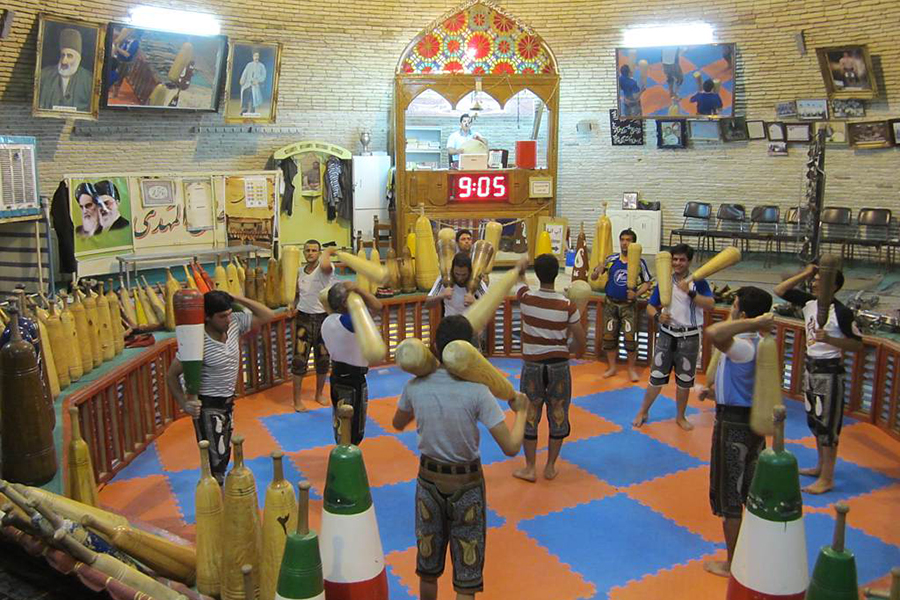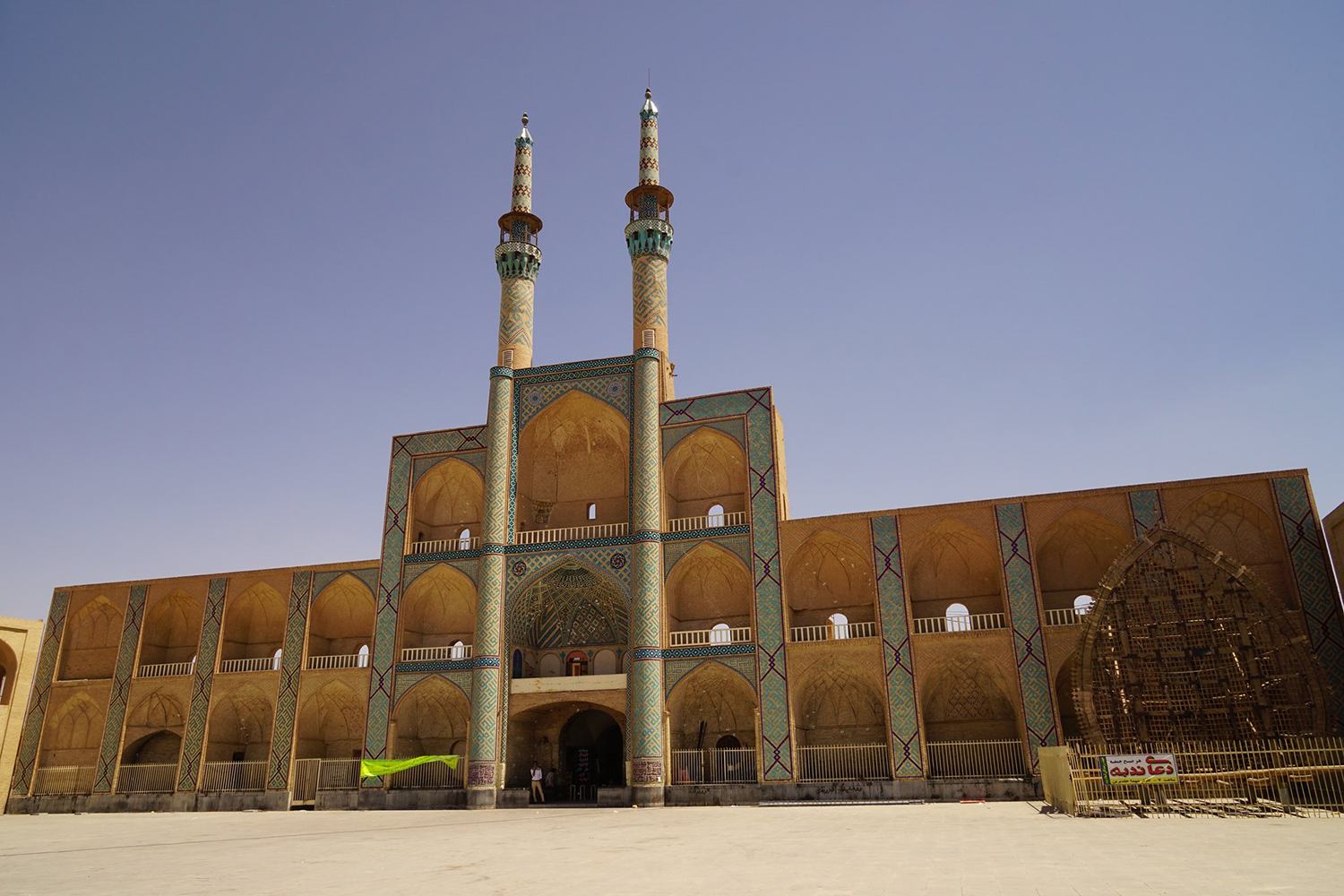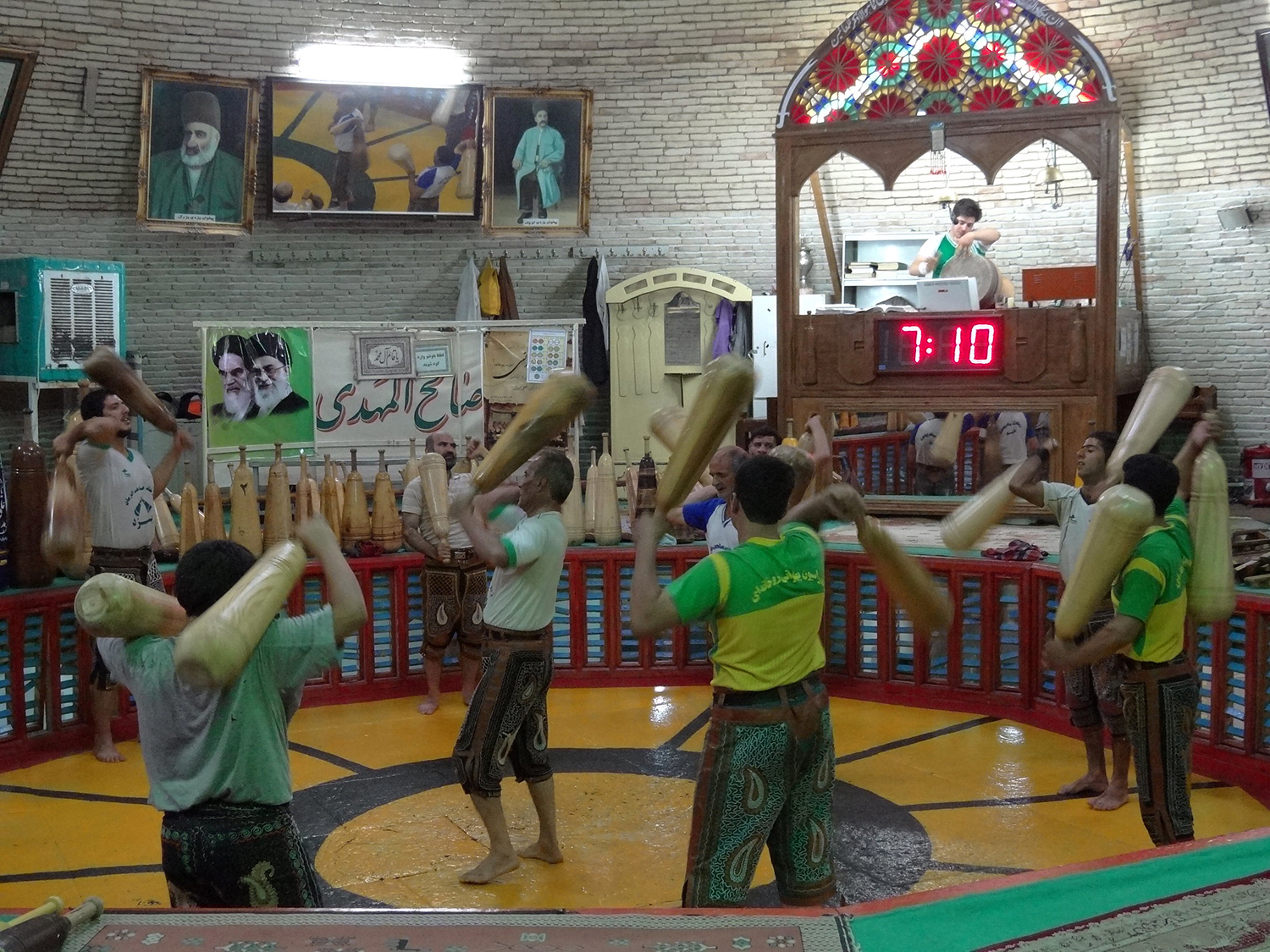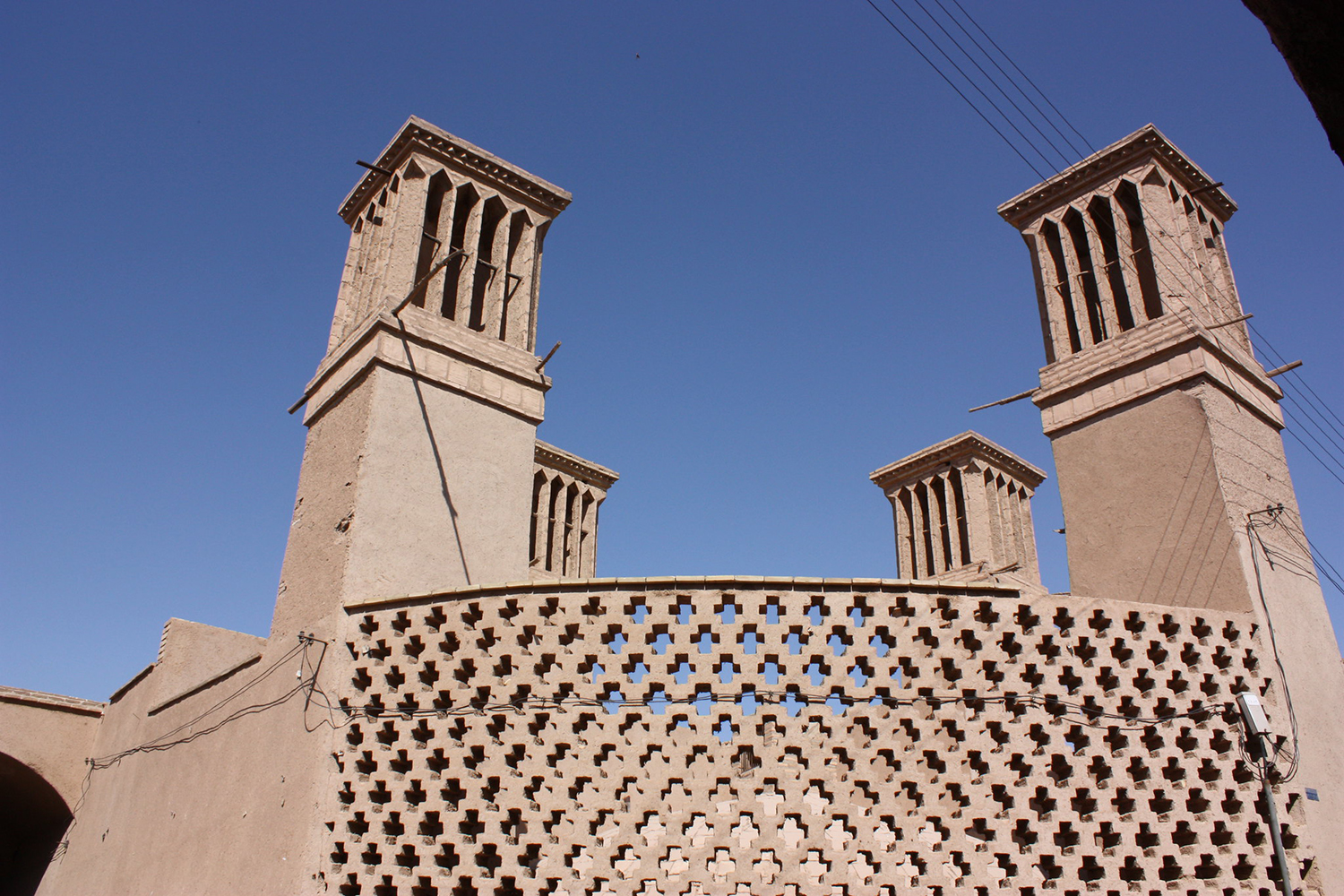The historic gyms, called zurkhanehs, of Iran provide an insight into the country’s traditional form of athletic training. Saheb A Zaman Zurkhaneh in Yazd provides a fantastic opportunity to watch the sporting spectacle.

Saheb A Zaman Zurkhaneh (Photo: David Stanley via Flickr / CC BY 2.0)
In the desert city of Yazd a traditional ritual dating back to the first millennium BC is still carried out, hidden from view in ancient gymnasia. But out in the sprawling Amir Chakmaq Complex in Yazd, Iran, a more modern sport seems to be in vogue. My gaze is diverted from the complex (which is home to a bathhouse, caravanserai and a mosque) by a thunderous “GOOOOOAL”. A lean teen is tugging at the bottom of his white Iran t-shirt for all in the square to know his pride. Another boy shakes his head, exhausted and crestfallen.
Finding the zurkhaneh
Then my attention turns to an even louder roar heard drifting from the northern side of the square. I can’t make out the words just yet. Trundling down dusty alleys and winding passageways in this desert city and leaving the symmetrical sunken alcoves of the Amir Chakmaq Complex behind, I finally find the source of the sound. It’s coming from the Saheb A Zaman Zurkhaneh, an ancient gym.

The Amir Chakmaq Complex (Photo: s1ingshot via Flickr / CC BY 2.0)
I tuck inside to find the leader of the gym, Ali Abbasi, thrashing his hands against a gazelle-skin drum, fingers whirling and twirling on the thin surface while he belts out words from the poet Hafez into a microphone. Jets of saliva bounce off the black sound piece as his fervour is spread across the domed room, “You carry all the ingredients to turn your existence into joy. Mix them, mix them!” Ali is the prime example of Hafez’s advice. His hands ever-present, his eyes brimming with pride and his voice jolting through the sticky, sweaty air have turned into nothing but precious joy.
The drumming and singing comes to an abrupt halt. Ali pauses to sip from a glass of water on his wooden pedestal. I follow the group of men found in the circular pit in front of Ali and the audience. They are here to carry out varzesh-e pahlavani, a practice of athletics and weight training which have been used since the first millennium BC, formerly as a method of military training. At the zurkhaneh, lessons on chivalry and spiritual health are also given which mix elements of Islam, Sufism and Zoroastrianism.
The men, and young boys, form lines in the pit. They are ready. They wait patiently for another strike of the drum. And just like that, Ali is present again. His drum rolls, his voice projects. The participants twirl and swirl this way and that, their bodies swooping and curling like a treble clef while they hop on the spot, jumping up and down like a jack-in-the-box. One, two, three, their arms jolt to the right-hand side. Four, five, six, their arms strike the air to their left-hand side as they bounce endlessly on the spot.

Carrying mils in the Saheb A Zaman Zurkhaneh (Photo: Adam Jones via Flickr / CC BY 2.0)
In unison, they reach out for two wooden clubs, mil, of differing weights; the wooden tubes range from 4kg to 40kg. Some of the clubs are sandy coloured and smooth, some are green, white and red – the colours of the Iranian flag. The men swing the mils from the back of their bodies to the front in one swooshing movement, again and again, back and forth – 40kg isn’t anything for some of these men.
Then – clink, clack, clash, clang. The men grab a kaman, a collection of metal chains dotted with castanets which symbolise the arrows and bows during war times. They are thrown above their heads and the group sways the kaman from side to side, there is not a bent arm in sight. The clatter is loud and rings through my eardrums, but no matter what, Ali’s voice is the prominent sound in this place.
The energy is fierce while the men cluster around the edge of the circle. They encourage each other, occasionally patting one another on the back, to stand in the centre. One lone teen makes his mark in the middle. He spins on the spot, again and again, his arms are straight, fingers pointing to the rest of the room while Ali thrashes the drum and projects Hafez’s words around the room once more. When will the boy stop? He suddenly catches himself and moves back to the outer ring, his balance is perfect, untouched.
Ali suggests a salivat, a prayer, on the microphone to finish off the practice, “O Allah, send peace on Prophet Mohammed”. The men and boys shake each other’s sweaty hands and clean their clammy faces with towels. A gentle gust of wind pulsates through the room. Their loose colourful linen trousers billow with the welcome breeze and the participants smile at each other.

The wind towers of Yazd (Photo: Andrea Taroni via Flickr / CC BY 2.0)
Looking up to the wind towers
I look up to the source of the gust of wind. It has come from the four sturdy badgir, wind towers on top of the roof of the zurkhaneh. Wind towers are well-known in Yazd and can be found dotting the desert skyline. They provide natural ventilation as the wind towers grab the fresh air around them and channel it down to the room below.
As I trace the curved brick walls of the zurkhaneh, I find a picture of Ali in a golden frame in the exact same setting as I just witnessed, drum in hand, microphone by his mouth – the real figure approaches me.
“Where are you from?” he asks with a real interest in his eye. “England”, I reply. “Welcome to Iran! I support Manchester United. It’s not the same though without David Beckham”, and he laughs to himself. He hands me a DVD (remember those?). “Here is more information about zurkhanehs”, he smiles. I thank him and he wishes me a pleasant stay in Iran.
As I head up the stony steps to leave the zurkhaneh, I smile to myself thinking about Iran and its infatuation with sport. The old, ancient traditions of zurkhanehs are thankfully still spread about the country, even though a zurkhaneh leader may also harbour a love of more modern sporting pursuits.
I make my way back to the Amir Chakmaq Complex to find my hotel – the young teens are still kicking their ball around. Another shout of “GOOOOAL!” but this time the roles have reversed. The goalkeeper from before has just scored. He runs around, arms straight, fingers pointing to the rest of the square. He stops and I congratulate the boy on his win. The future of the zurkhaneh comes to my mind. I wonder if in decades to come, these boys will take Ali’s place on the pedestal in the ancient gym. I wonder whether they, too, will be playing the drum as Hafez’s words continue to ring through the building all the way up to the badgirs.